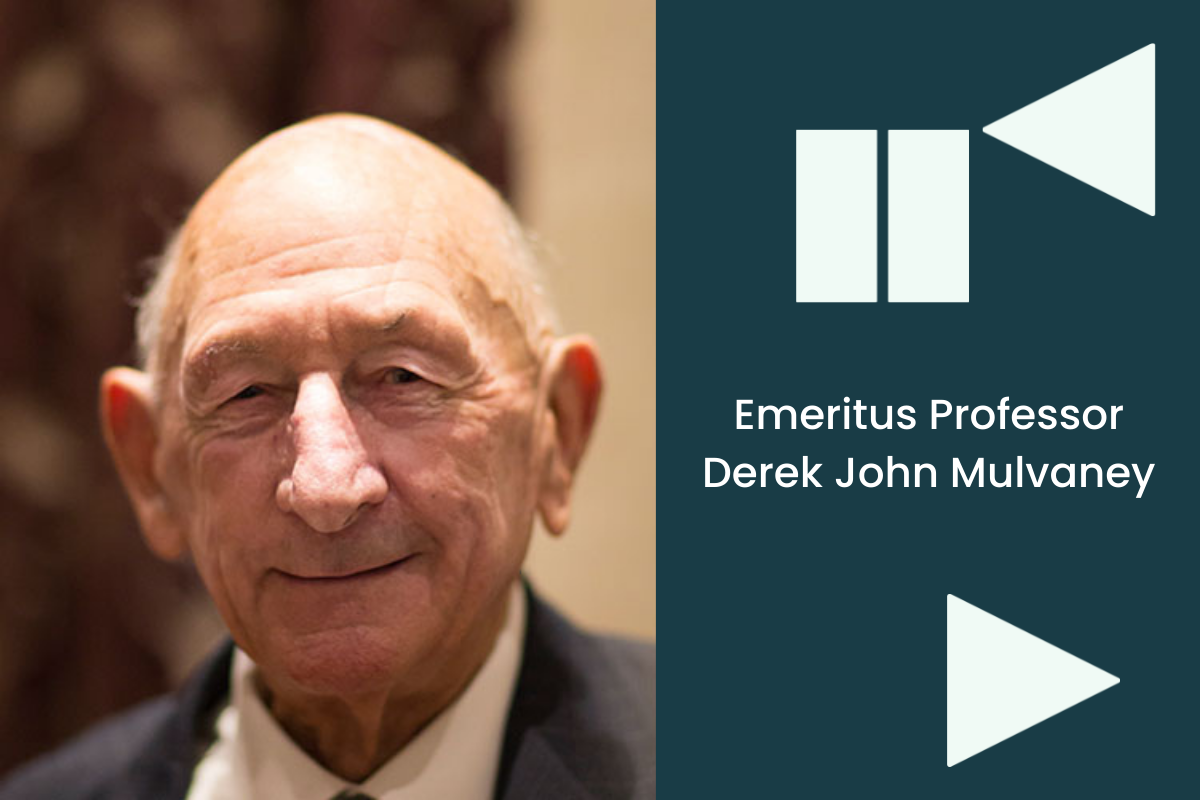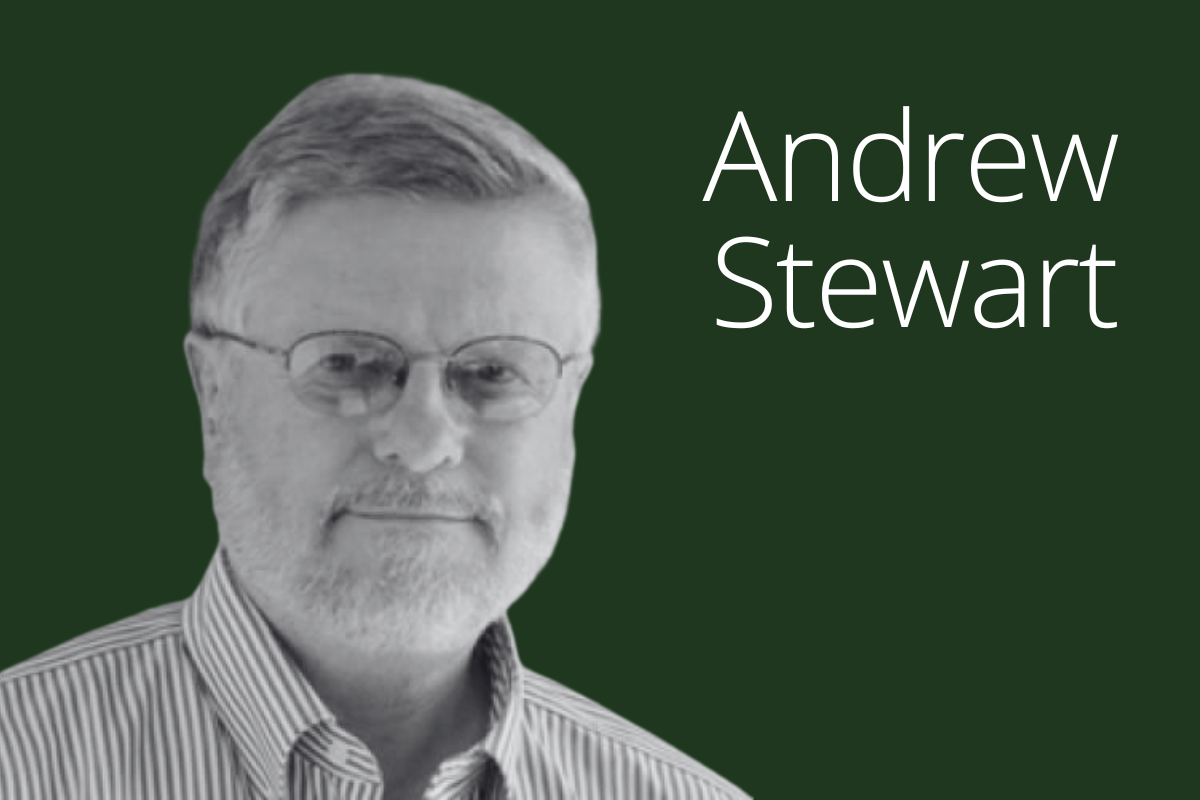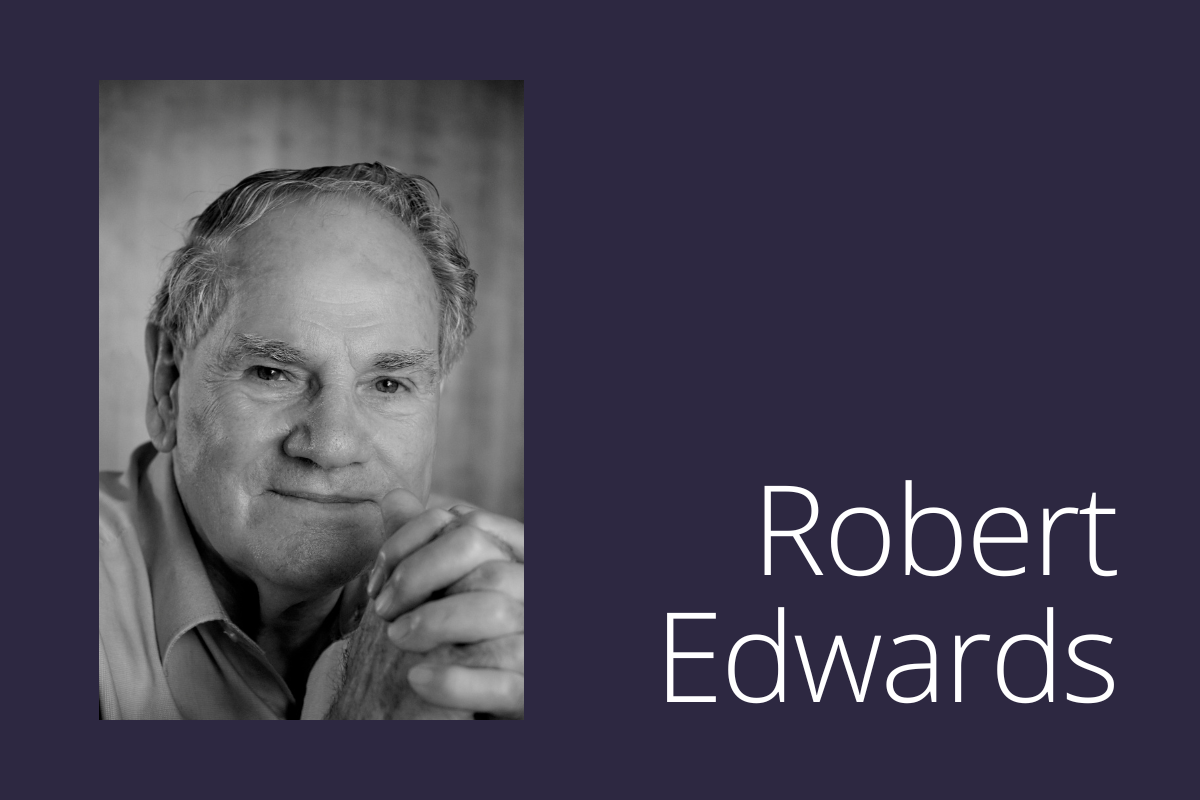John was born in 1925 in Yarram in south Gippsland. His father was a teacher and before the Second World War the family moved through country Victoria, to towns such as Rainbow in the Mallee where his father was headmaster of Rainbow Higher Education School and eventually to Frankston near where he was born. In 1943, at age 18, he joined the RAAF and was sent to Canada for training. The following year he was posted to England. During his military service in England he toured the countryside and visited megalithic standing stones called ‘the Consuls’. It was this particular visit that sparked his interest in prehistory. On his return to Australia, John enrolled at the University of Melbourne and studied Roman History under John O’Brian. In 1949 he was appointed tutor in ancient history by Max Crawford, Professor of History at the University of Melbourne. He immediately enrolled in an MA and submitted his thesis 12 months later. The topic of his thesis was ‘State and Society in Britain at the time of Roman conquest’. This was a turning point as John’s studies of ancient Britain had convinced him that Australia must also have a significant archaeological record as well. While this observation seems self-evident today, this was not the case in 1950.
John next applied for an ANU post-graduate scholarship. In his application he argued that it was essential for him to train as an archaeologist and that he would have to do undergraduate studies in prehistory at Cambridge University. Fortunately, the ANU committee was persuaded, and in 1951 John became an undergraduate student again, this time at Clare College. At Cambridge John studied stone tools and to gain essential field experience he participated in a number of archaeological excavations in Britain, Ireland and Libya. He also toured archaeological sites in Germany and Denmark.
Shortly after his return to Australia, John began lecturing in ancient history at the University of Melbourne, with his former teacher and mentor John O’Brian. One of the courses he taught was the history of archaeology. Amongst his many other achievements, John fundamentally changed the way archaeological fieldwork was practised in Australia, producing the first guide to field techniques in 1968.
By the mid-1950s John had begun his journey into Australian prehistory by excavating a limestone rockshelter at Fromm’s Landing on the Murray River. His labours continued into the early 1960s and included his discovery of what are still the oldest recorded dingo remains in Australia, and evidence for a massive flood of the Murray thousands of years ago. His report on Fromm’s Landing was published a year after he completed his last season of fieldwork. John’s second excavation was also a limestone rockshelter, this time at Glen Aire on Cape Otway. It was Isabel McBryde’s first fieldwork experience. John’s third excavation, at Kenniff Cave between 1960 and 1963, pushed back the antiquity of Aboriginal occupation of Australia many thousands of years into the Pleistocene era. He went on to excavate at Ingalladi in the Northern Territory in 1963 and 1966, producing some of the first ages for rock art in Australia.
In 1965 John was recruited by the ANU and within a few short years published his foundational volume the Prehistory of Australia, which opened with memorable words: ‘The discoverers, explorers and colonists of the three million square miles which are Australia, were its Aborigines.’. This book saw three editions – the most recent with Jo Kamminga as co-author in 1999. John’s outputs were prolific and polyglot. For example as early as 1967 he had published Cricket Walkabout: The Australian Aborigines in England and by 1989 Encounters in Place: Outsiders and Aboriginal Australians 1606–1985.
In 1969, John travelled with Jim Bowler and Rhys Jones to Lake Mungo to investigate Jim’s discovery of Pleistocene-age artefacts and human remains that were later to be known as ‘Mungo lady’. As with much of John’s work, this expedition is now history. He returned with Jim in 1973 to direct the largest dig ever at Mungo, which revealed a hearth dated to about 31,000 years. In his twenty years of fieldwork, John changed the historical imagination of a nation. After the Lake Mungo discoveries, the notion of an immensely long and vivid Indigenous past was generally acknowledged and quickly became a fundamental part of the way Australian history is viewed.
In 1971 John was appointed as Foundation Chair in Prehistory within the Arts Faculty at the ANU and in the following year introduced Prehistory 1 as an undergraduate subject. At this time, ANU was the only Australian university to offer a full major in prehistoric archaeology. John was pivotal in introducing Australian prehistory into the tertiary teaching curriculum, and trained a generation of Australian archaeologists. He also turned his attention to public issues. He was involved in organising the first-ever meeting of Australian Archaeological Association.
John served as a Commissioner of the Australian Heritage Commission, was involved in the formulation of the Burra Charter, and was the chief Australian delegate to the inaugural UNESCO meeting in Paris, held to determine the criteria for World Heritage Listing. He was instrumental in nominating the Willandra Lakes and Kakadu National Park to the World Heritage List. He served a total of 18 years on the executive of the Australian Institute of Aboriginal Studies and served on the Committee of Inquiry on Museums in 1974–1975 (the very influential ‘Pigott’ Report) in which he championed the establishment of the National Museum of Australia.
John was a leading light in bridging the gap between the public and academia. He actively campaigned on pubic issues, not the least the struggle to save the Franklin River and its Aboriginal heritage, and support for Dawn Casey during her tenure as Director of the National Museum of Australia. He made significant contributions to public debates concerning cultural heritage, archaeology and national cultural collections. His role as a public intellectual during his long career has been detailed in the book Prehistory to Politics: John Mulvaney, the Humanities and the Public Intellectual edited by Tim Bonahady and Tom Griffiths.
After his retirement from the ANU in 1985 John continued to produce books, give public lectures and lobby for studies of Australian history and archaeology and the humanities in general. He served for many years as Secretary of the Australian Academy of the Humanities in an honorary position. He continued to write, co-author and edit books, including, in 1992 Commandant of Solitude (The journals of Captain Collet Barker), in 1997 My Dear Spencer: the letters of F.J. Gillen to Baldwin Spencer, the third revised and enlarged edition of Prehistory of Australia, in 2004 Paddy Cahill of Oenpelli, in 2007 The Axe Had Never Sounded: Place, People and Heritage of Recherche Bay, Tasmania and in 2011 Digging Up a Past. In 2013 the John Mulvaney Public Lecture series began at the ANU.
In 2004 The Australian Archaeological Association awarded John its highest honour – The Rhys Jones Medal. In the citation it noted “the AAA acknowledges his pioneering spirit, his distinguished and sustained achievements in Australian prehistory, his fostering of the discipline in Australia and mentoring of so many young archaeologists, including those who themselves have attained distinction, and more, his inspiration, dedication, integrity, and exceptional professionalism.
John’s numerous awards include a Doctorate from Cambridge University in 1970; the Companion in The Most Distinguished Order of St. Michael and St. George in 1982; the Order of Australia in 1991 and in 1999 the Graham Clark Medal from the British Academy.
John will be sorely missed by the Archaeology Fellows of the Academy. We extend our sincere condolences to his wife Liz and children Anne, Claire, Gregory, Ken, Michael and Richard.
Professor Peter Veth FAHA peter.veth@uwa.edu.au
Dr Mike Smith AM FAHA m.smith@nma.gov.au




